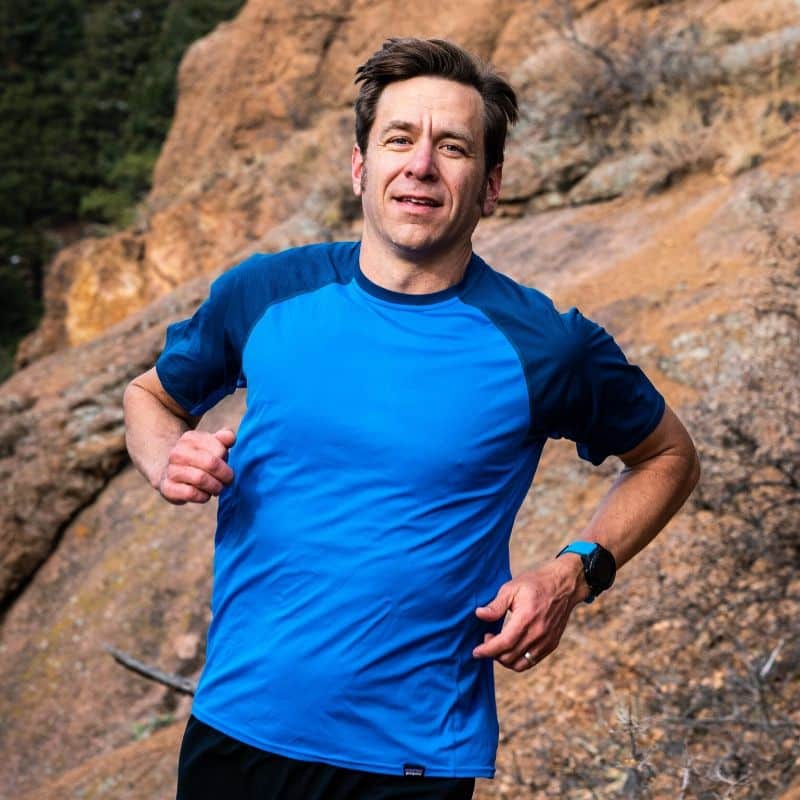
Do You Have These Valuable Traits for Ultramarathon Performance?
By Jason Koop,
Head Coach of CTS Ultrarunning
For years I have wanted a fantasy football-style league for trail and ultrarunning (come on, you know you want one too). It would be fun, good for the sport, akin to the annual iRunFar Western States prediction contest that draws international acclaim and fun banter all at the same time. Along these lines I’ve used time on my long runs to consider what stats would go into building the right team.
In fantasy football, you have access to any player’s previous performances, like yards gained or number of points scored. You can use that data to inform your draft picks and to swap players out week to week. If an analogous trove of information were available for trail and ultrarunning, what pieces of physiological data and traits for ultramarathon performance would we use to build a winning team? As it turns out, there’s some recent research on the subject, and the results might surprise you.
The Study: Traits for Ultramarathon Performance
A French research team led by Frederic Sabater Pastor sought to determine what physiological characteristics determined performances across different race distances under similar conditions. To paint this picture, they focused on the UTMB races. They enrolled 75 competitors across the MCC (40k), OCC (70K), CCC (101K), TDS (145K), and UTMB (170K) races. This model accentuates the specific effect of race distance because all runners raced on similar terrain and many of the same trails).
For statistical purposes, the research team described the MCC and OCC as ‘SHORT’ trail races, the CCC as ‘MEDIUM’ and the UTMB/TDS races as ‘LONG’. Interestingly, they couldn’t evaluate the LONG race category because the race performances were too variable. C’est la vie.
The runners completed a battery of tests beforehand. Researchers evaluated standard aerobic criteria such as VO2 max and ventilatory thresholds. They measured running economy and fat oxidation at 10 km/hr, which is a relatively easy speed for the cohort. Then the researchers scrutinized subjects for some less traditional measurements (to the endurance world, at least). These included maximal knee extensor and plantar flexion force, their power-force velocity relationship (determined by a 7 second sprint on a bike) and neuromuscular fatigue.
What the Study Means for Runners
Think of the research like this: if someone develops a trail and ultrarunning fantasy league, this is the type of date you might be able to access. You can use these traits for ultramarathon performance to select your team and win wonderful prizes (probably left over gels from drop bags). More importantly, you’d have bragging rights for the rest of the season.
Since I realize you don’t read my articles for fantasy sports advice, let’s get to more practical part of the research. If you know the physiological determinants of performance, you can tailor training better to enhance those specific areas. Also, you know what aspects are not important. You can choose to forgo development those areas if you are trying to maximize performance. This is the reason you don’t see elite marathoners trying to maximize their bench press. Maximum force for the upper body is not related to marathon performance. However, you do see them routinely do lower body plyometrics, which improves running economy.
Practical Considerations
So, here are some practical considerations that emerged from studying physiological parameters in relation to race distance on similar terrain:
- VO2 max is highly correlated with performance at the SHORT and MEDIUM distances. As a side note, lower body fat was correlated with better performances. This makes sense because VO2 max is expressed relative to body weight (ml/kg/min), so a higher body weight will result in a lower VO2 max. An athlete’s VO2 max also became less important as the race distance went up.
- Maximal fat oxidation was highly correlated with performance at the SHORT distance but not at MEDIUM.
- Maximum force production was correlated with better performance at the SHORT distance.
- Running Economy (expressed in this research as its mathematical cousin, Cost of Running) was not correlated with performance for any distance.
How to Pick an Ultramarathon Fantasy Team
So based on these results, how would you go about picking your fantasy team of trail or ultrarunners?
Fitness First
First, fitness always wins. The bigger the engine, the better the performance, and this recent research corroborates almost all the previously established literature that correlates VO2 max with performance across a wide range of trail disciplines. Fortunately, we also have long established principles on how to improve VO2 max with training. Both low intensity and high intensity training can improve VO2 max. Simply put, train a lot, do a variety of intervals, and periodize your training.
Then Fat Oxidation
Next, let’s talk about fat oxidation. According to the low carb crowd, as distance so does the advantage of some sort of fat metabolism magic. This could be through fasting, undertaking a low carbohydrate diet, or even using a supplement like this one which claims to increase fat oxidation. However, this research indicates the opposite.
As distance increased, increases in fat oxidation do not lead to better performances. Why? As the research team notes, the lower intensity of the longer races makes it more conducive to consuming carbohydrate. This only adds to the evidence that undergoing any special fat metabolism strategy is unnecessary, especially because endurance athletes are already good fat burners, particularly ultramarathon runners (Rauch 2022).
Force Production
After that, if you are competing in a shorter mountainous ultramarathon, the fact maximum force production is related to performance could compel you to perform some sort of strength training routine. Mysteriously absent from the subjects’ characteristics is any information on whether they routinely performed strength training.
► Free Ultrarunning Training Assessment Quiz
Take our free 2-minute quiz to discover how effective your training is and get recommendations for how you can improve.
As a result, it is difficult to tie a specific training intervention to the finding on maximum force production. It might result from strength training or some other related circumstance (training on more trails, naturally derived differences, etc.). Nonetheless, if you want to increase maximum force production and rate of force production, lift heavy things. You can follow this periodization scheme strength coach Sarah Scozzaro helped me develop.
Running Economy
Finally, let’s talk a bit about running economy. Running economy has become the King and Queen maker in elite marathoning over the past couple of decades. Nike’s Breaking 2 project and all the subsequent shoe innovation has been inordinately focused on improving running economy via the use of carbon fiber plates. The trail and ultra space has not been immune; several shoe manufactures are integrating similar carbon fiber plates. Many coaches and training programs now emphasize running economy improvements. Some, unfortunately, do so via all manner of contrived strides, intervals and other training manipulations.
I have said many times that ultramarathons are not simply long marathons, and we shouldn’t train for them as such. This also applies to targeting running economy. With this research, and most earlier research, it is fair to say running economy is not indicative of ultramarathon performance.
In fact, as was theorized as early as 2011 by one of the co-authors of this paper, Guillame Millet, trail and ultrarunners may be better off intentionally sacrificing running economy in ultramarathons to gain some other more important advantage (namely preserving muscle integrity).
Enjoying This Article? Get More Free Running Training Tips
Get our coaches' best training advice, delivered straight to your inbox weekly.
The Take Home
Regardless, the take home message is that developing great aerobic fitness is a better use of time. You can do that by using reasonable periodization rather than trying to focus training interventions specifically to improve running economy.
So, there you have it, a perfect way to use traits for ultramarathon performance to build your fantasy ultramarathon team. Pick people with high VO2 max values, and for performance at shorter distances, choose good fat burners that have some muscular power.
References
Pastor, F. S., Besson, T., Varesco, G., Parent, A., Fanget, M., Koral, J., Foschia, C., Rupp, T., Rimaud, D., Féasson, L., & Millet, G. Y. (2022). Performance Determinants in Trail-Running Races of Different Distances, International Journal of Sports Physiology and Performance (published online ahead of print 2022). Retrieved Mar 7, 2022, from https://journals.humankinetics.com/view/journals/ijspp/aop/article-10.1123-ijspp.2021-0362/article-10.1123-ijspp.2021-0362.xml


Comments 2
Please give us the ultra running fantasy league – now!
Also: thanks for all the concise, aplicable advice you put out there!
Love your contribution to ultra running, I’ve had a nagging feeling that strength training may be more important for the geriatric ultra runner,